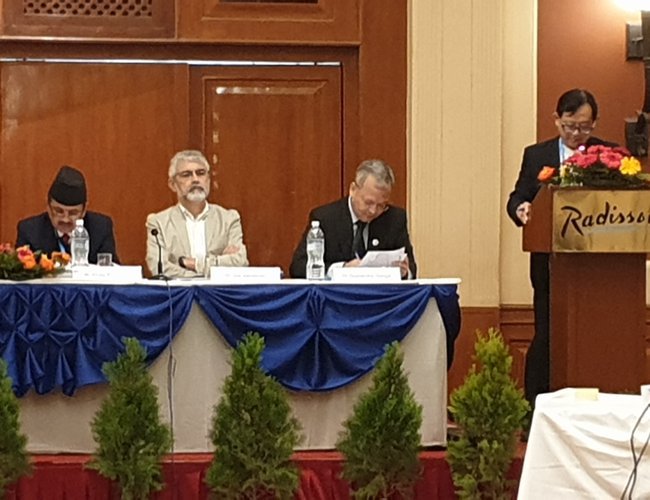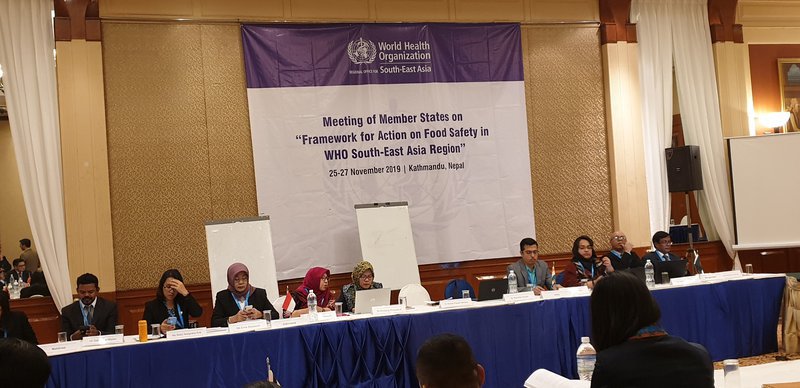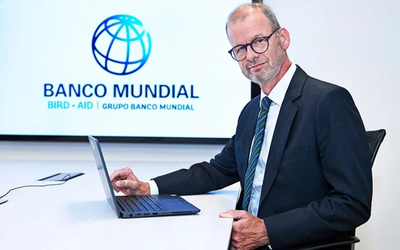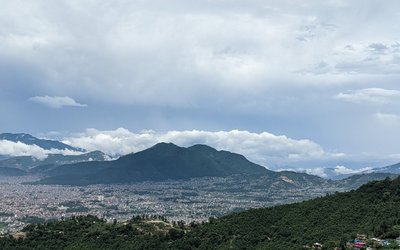
As there are growing demands for safe food for consumption with quality preservation in Nepal, Food and Agriculture Organization of the United Nations (FAO) in Nepal also holds the same view.
Dr Somsak Pipoppinyo, the Representative of Food and Agriculture Organization of the United Nations (FAO) for Nepal and Bhutan, has expressed concern over the risk and of food borne diseases that impede socioeconomic development by straining health care system and harming national economies, tourism and trade. Foods borne illness are relatively high in low and middle income settings where hygiene, safe water for preparing food, and adequate storage conditions remain as challenge.
Speaking in a meeting of Member-States on “Framework for Action on Food Safety in the WHO South-East Asia Region” organized in Kathmandu, Dr Pipoppinyo said, “the situation in South East Asia Region (SEAR) including Nepal is considerably more critical. The key challenges in this Region are food legislation; food control management; inspection services; laboratory services; available information, education, communication and training.”

Stating that the safe and high quality food is critical to ending hunger and promoting health—two of the primary goals of the 2030 Agenda, FAO Representative Dr Pipoppinyo said, “In Nepal, the Right to Food has been enshrined in the Country’s Constitution. The aspects of Food Safety and Quality are important elements of the right to food. Consumers have the right to expect that the foods they purchase and consume are safe and of high quality. It is therefore important to keep in mind that food stays safe for consumption with preserved quality at every stage of the food chain—from farm to folk.”
He is of the opinion that the major food chains in countries of this Region are relatively long, generally due to poor infrastructure which makes food more vulnerable and more susceptible to contaminants and harmful agents, such as microorganisms and chemicals. In addition, adequate infrastructures and equipment, sufficient resources and capacities to fully implement technical regulations, conformity assessment and safety of food are still in developing phase, which requires more focus and investment for better functioning.
“FAO’s approach is based on the general principles of establishing and strengthening food systems by building capacity for, and putting in place risk-based managements for food control, especially implementing international food safety standards as established by the Codex Alimentarius Commission,” FAO Representative Dr Pipoppinyo said.
Underlining longstanding partnership between FAO and WHO to enhance food safety and food quality aspects, especially through complementary mandates, he said, “FAO and WHO work together to cover a comprehensive range of issues to support global food safety and protect consumers’ health. While, WHO have specific focus on general public health, FAO addresses food safety issues through agri-production and food chain system.”
- MELAMCHI WATER SUPPLY: No Interruption During Monsoon
- Jun 25, 2025
- KOREAN RETURNEES: Successful Integration
- Jun 25, 2025
- UPPER TRISHULI-1: Engaging With Local
- Jun 25, 2025
- IME GROUP: Twenty Five Years Of Journey
- Jun 24, 2025
- NEPAL’S AIR POLLUTION: A Growing Health Concern
- Jun 24, 2025















